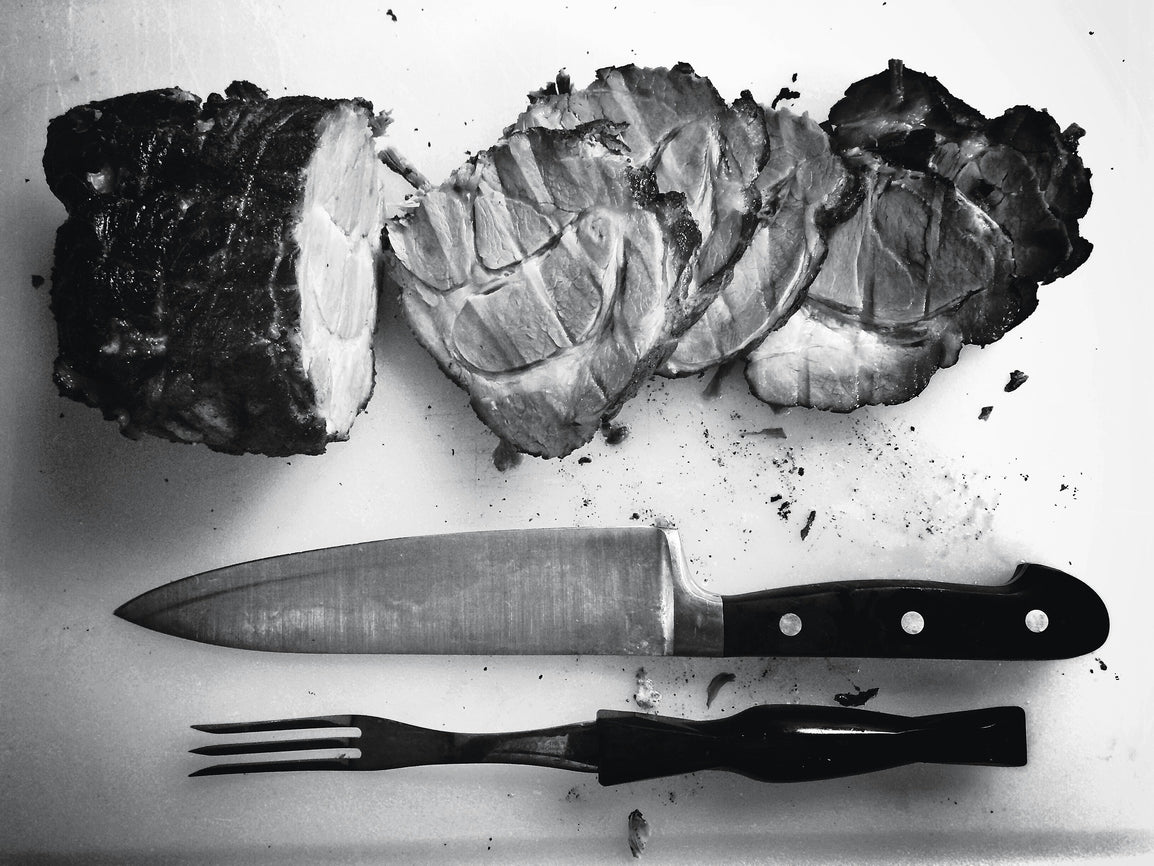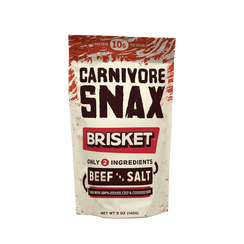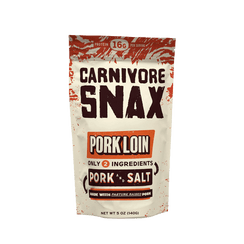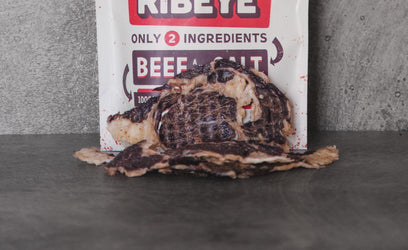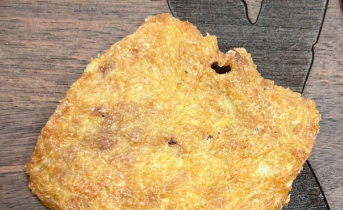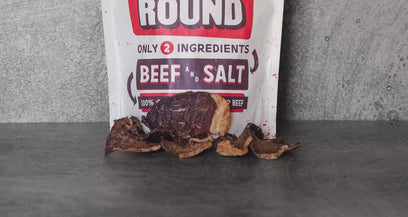THE CARNIVORE DIET BENEFITS




You may be familiar with the carnivore diet benefits, and perhaps you’re even aware of the power intermittent fasting has. But what about combining carnivore diet and intermittent fasting?
This dynamic nutritional duo can help you supercharge your carnivore diet weight loss goals, but that’s just the tip of the iceberg. Intermittent fasting on carnivore diet has been shown to support a healthy inflammatory response and healing, and there are cognitive implications as well.
We’ll weigh the benefits and challenges of carnivore diet and fasting while sharing tips on getting started on the right foot. From choosing your fasting window to understanding how to break a fast on carnivore diet and even carnivore diet foods to make your efforts easier and more effective - learn everything you need to know below!
Overview of the Carnivore Diet and Intermittent Fasting
Let’s start with the basics of fasting on carnivore diet by explaining the two principles themselves before looking at the synergy they offer when combined.
What is the Carnivore Diet?
So, what is the carnivore diet? As the name suggests, this dietary regimen focuses exclusively on animal-based foods. What can you eat on the carnivore diet, exactly?
Anything that comes from an animal is free game. That means meats, fish, eggs, and certain dairy products like milk and cheese. The only real carnivore diet rule is you must eliminate all plant-based foods, including fruits, vegetables, grains, nuts, and seeds.
The philosophy behind the regimen is rooted in the belief that human beings thrive on a diet similar to that of our ancestors, who primarily consumed animal products.
Proponents of the carnivore diet argue that many modern health issues, such as obesity, inflammation, and autoimmune diseases, are exacerbated by the consumption of plant-based foods and carbohydrates.
Nutritionally, the carnivore diet is characterized by high protein and high fat intake with virtually no carbohydrates. This macronutrient composition leads to a state of ketosis, where the body burns fat for fuel instead of glucose.
The carnivore diet before and after results can be astounding. Key benefits include weight loss, improved mental clarity, increased energy levels, and better digestive health.
However, you need to be aware of the carnivore diet pros AND cons. The carnivore diet side effects can be uncomfortable as your body adapts to an all-meat diet, with symptoms like carnivore diet constipation, nausea, fatigue, and more. This is known as the carnivore flu, and tends to pass within a few days to weeks.
On its own, this diet is a powerful nutritional approach that can change your life for the better. But could it be even better? Let’s look at the other half of the carnivore diet and intermittent fasting conversation.
What is Intermittent Fasting?
Intermittent fasting (IF) is an eating pattern that cycles between periods of eating and avoiding any sort of caloric intake. Unlike traditional diets that specify what foods you eat, intermittent fasting focuses on when you eat.
The most common fasting protocols include the 16/8 method (16 hours of fasting followed by an 8-hour eating window), the 18/6 method, the 20/4 method, and the One Meal A Day (OMAD) approach.
Some people also practice longer fasting periods, such as 24-hour or 48-hour fasts - but that’s not something we recommend until you’ve gained ample experience with less aggressive fasts.
So, why bother with fasting? When in a fasted state your insulin levels drop, and the body begins to utilize stored fat for energy. This can promote weight loss and improve metabolic health.
Intermittent fasting has also been associated with benefits such as improved insulin sensitivity, reduced inflammation, enhanced cognitive function, and increased longevity.
The simplicity of intermittent fasting makes it an attractive option as there are no specific food restrictions. It can be adapted to fit various lifestyles and preferences, allowing individuals to choose fasting windows that align with their daily routines.
You’d be surprised how easy it is to go 12-24 hours without eating, too, when you follow a proven blueprint. We’ll share one later on to set you up for success. For now, let’s turn our attention to examining the synergy between the carnivore diet and fasting.
Should You Try Intermittent Fasting on Carnivore Diet?
Each of these dietary regimens offers a world of benefits, and many of them are quite similar. So, should you consider trying intermittent fasting on carnivore diet yourself?
Synergistic Benefits of Combining Both Approaches
Because one diet (carnivore) focuses on what you eat, and the other (IF) focuses on when you eat, they work together seamlessly to offer incredible synergistic benefits, including:
- Enhanced Weight Loss and Fat Burning: IF promotes a state of ketosis, similar to the carnivore diet. By combining the two, you can maximize the time your body spends in this fat-burning state, leading to more efficient weight loss.
- Improved Metabolic Health: Both intermittent fasting and carnivore diet are known for their positive effects on metabolic health. IF can improve insulin sensitivity, lower blood sugar levels, and reduce inflammation. Meanwhile, carnivore’s focus on high-quality animal fats and proteins can stabilize blood sugar levels and support metabolic function.
- Increased Mental Clarity and Cognitive Function: The carnivore diet due to the stable energy levels provided by fats and proteins helps you think more clearly and boost cognitive performance. IF can also promote brain health by increasing the production of brain-derived neurotrophic factor (BDNF) and supporting autophagy, a process that clears out damaged cells and promotes cellular repair.
- Simplified Eating Routine: With a restricted eating window and a limited variety of foods to choose from, meal planning becomes straightforward. This simplicity can reduce decision fatigue and make it easier to adhere to your dietary goals.
Is There Any Downside?
It’s clear that carnivore diet and fasting offer a variety of benefits - so what’s the catch? Fortunately, there’s no real downside to be worried about. Just an adjustment period and a few societal challenges you’ll have to navigate.
Adapting to both the carnivore diet and intermittent fasting can be challenging at first. Your body needs time to adjust to the lack of carbohydrates and the new eating schedule.
During this adjustment period, you may experience symptoms like fatigue, irritability, and cravings. We suggest alleviating this by starting carnivore diet first, giving yourself a few days/weeks, and then trying your first fast. More on that later.
However, there are also concerns surrounding nutrient deficiencies from avoiding all plant-based foods. This is one of the most common complaints lobbied towards carnivore. The solution is you can use carnivore diet supplements or follow a modified carnivore diet.
One of the biggest hurdles you’ll have to overcome is the societal challenge of intermittent fasting on carnivore diet. Both approaches are restrictive in their own right, which can make it hard to enjoy meals with loved ones. You’ll need to be committed to avoid cheating on the diet.
That being said, if you’re ready to try merging intermittent fasting and carnivore diet, you’re making a great decision for your health and happiness - one that will pay off within weeks or months in the way you look and feel.
So, let’s get into some of our top tips for intermittent fasting on carnivore diet.
Tips for Intermittent Fasting on Carnivore Diet
We briefly touched on this earlier, but adjusting to either carnivore diet or intermittent fasting can be difficult - attempting to do both at the same time can be downright miserable!
Remember, whole-body health is a marathon, not a sprint. It’s important that the dietary changes you’re making are sustainable. So, start by adapting to the carnivore diet and giving your body a chance to adjust before you embark on your first fast,
Begin By Adapting to the Carnivore Diet
Typically, the body needs a few weeks to adapt to the shift away from plant-based foods to only animal products. During this time you should consume a variety of animal-based foods to ensure you're getting a balanced intake of essential nutrients.
Even if it feels like your energy is zapped and your stomach hurts, continue to push through - the light at the end of the tunnel is closer than you may realize.
You can also alleviate the symptoms of the carnivore flu by slowly removing plant-based sources one at a time. Start by eliminating fruits, then vegetables, then grains, until you’re left eating only animal-based foods.
If you aren’t sure where to start, this carnivore diet plan we’ve created is an excellent starting point. We have a great list of recipes for carnivore desserts, carnivore diet breakfast, carnivore diet side dishes, and more.
Starting Conservatively and Gradually Increasing Fasting Windows
Once you feel like your body has adapted it’s time to bring in the other half of the carnivore diet and intermittent fasting. Again, we suggest a slow, methodical approach. There is no need to rush yourself through this journey.
Start with shorter fasting periods, such as 12 hours of fasting followed by a 12-hour eating window. Gradually increase the fasting duration to 14 hours, 16 hours, and eventually aim for the more common 16/8 or 18/6 fasting windows.
Pay attention to your body's signals and avoid pushing yourself too hard too quickly. The last thing you want is to do more harm than good when fasting on carnivore diet.
How to Break a Fast on Carnivore Diet
Understanding how to break a fast on carnivore diet is just as important as the fasting period itself. The right approach will help prevent digestive discomfort and maximize nutrient absorption.
End your fast with a small, easily digestible meal. Opt for softer cuts of meat, bone broth, or eggs, which are gentle on the stomach.
Avoid large, heavy meals immediately after fasting, no matter how ravenous you may feel. Gradually increase portion sizes in subsequent meals as your body readjusts to eating.
Optimizing Meal Composition During Eating Windows
While there are technically no strict requirements for what you eat as long as it’s animal-based, the goal is to focus on nutrient-dense, high-quality animal products to sustain energy levels and support overall health.
Prioritize fatty cuts of meat, such as ribeye or pork belly, as these provide essential fats needed for satiety and energy. Include a variety of organ meats for their rich vitamin and mineral content, as this will help you fill in the gaps from not consuming plant-based foods.
You’ll find yourself snacking a lot while intermittent fasting on carnivore diet, which is why you need the right carnivore diet snacks. Your search ends here at Carnivore Snax!
Our meat chips, or meat pastries as they’ve been referred to, are a match made in heaven for the carnivore diet and fasting. They combine just two ingredients, meat and salt - that’s it. They’re delicious and melt in your mouth, leaving you craving more. Feel free to indulge because they’re so good for you!
We have a variety of carnivore chips to choose from as well so you can keep things fresh and fun and avoid getting bored. Here are our most popular:
Order yours today and see for yourself what makes them the best low carb snacks, whether you’re on keto vs carnivore, paleo vs carnivore, lion diet vs carnivore diet, or anything in between.
Staying Hydrated and Managing Electrolytes
Without adequate fiber, your body relies heavily on water and electrolytes to maintain proper digestion and overall function. Drink plenty of water throughout the day, especially during fasting periods. This will also help you stave off hunger.
Consider adding electrolytes to your water or consuming bone broth, which is rich in sodium, potassium, and magnesium. This helps you avoid dehydration, muscle cramps, and fatigue. Just be careful about accidentally consuming calories during your fast, which would break it.
Timing Your Workouts
When combining the carnivore diet and intermittent fasting, we suggest you schedule your workouts towards the end of your fasting window or right before you break your fast.
This leverages the increased adrenaline and growth hormone levels that occur during fasting, potentially boosting workout performance and fat burning.
Post-workout, break your fast with a nutrient-dense meal rich in protein and fat to support muscle repair and replenish energy stores.
Always listen to your body and adjust workout intensity based on how you feel, gradually increasing as you adapt to the combined regimen.
If you find that you simply cannot fight through your workouts in a fasted state, that’s perfectly fine - you can try working out during your eating window. Never force something that feels unsafe.
Managing Cravings
You should expect cravings when combining intermittent fasting and carnivore diet - especially at first as you transition away from a traditional diet.
To combat these, make sure you consume enough nutrient-dense foods during your eating window to stay satiated - specifically, fattier cuts of meat. Drinking water or bone broth can also curb cravings.
If you experience cravings during fasting periods, distract yourself with activities or practice mindful eating techniques. Again, having the right snacks on hand can allow you to satisfy your cravings without compromising on your goals. So, stock up at Carnivore Snax today!
Final Thoughts on Carnivore Diet and Fasting
Combining the carnivore diet and intermittent fasting can supercharge the benefits each has to offer, resulting in enhanced weight loss, metabolic health, and mental clarity. We hope you feel clear on how to start intermittent fasting on carnivore diet after reading this guide.
You can find more carnivore diet tips and resources in our blog, like doing the carnivore diet on a budget, carnivore diet and cholesterol, carnivore diet testosterone, carnivore diet for women, carnivore diet seasoning, and more.
Set yourself up for success on this journey with nutritious, delicious snacks from our catalog before you leave today. Indulge in the best carnivore snacks available and make your health goals a reality without compromising on cravings!









